Among the many varieties of pepper, large thick-walled varieties are in special demand among gardeners. These include peppers with a thickness of pericarp (surrounding the seeds and forming the appearance of the shell of the fetus) in excess of 6 mm. This vegetable crop loves heat, which during a long growing season effectively provides a greenhouse.
There are a huge number of varieties of such pepper. Today, stores offer a large assortment of time-tested and new thick-walled peppers for both open ground and greenhouses, which differ in appearance, fruiting period, average fruit mass, yield and thickness of the juicy and nutrient wall.
Content
Resistant varieties of large thick-walled peppers for open ground
Large varieties of sweet peppers with a thick crust do not differ much in endurance, but there are many varieties that actively develop and bear fruit in the open ground. The most common resistant varieties are presented in the table below.
| Grade | Wall thickness (mm) | Plant height (cm) | Fetal shape | Fetal mass (g) and yield (kg / m2) |
Color in technical and biological ripeness The number of days from seedling to tech. ripeness |
|---|---|---|---|---|---|
| Asti | 6-8 | 50-70 | cuboid |
180- 220 10 |
red 110-120 |
| Anastasia | 6-8 | 60-80 | conical with slightly pronounced faces |
200-250 2,5-4,8 |
dark cherry 120-130 |
| Belozerka | 6-7 | 40-70 | conical |
75-90 up to 8 |
pale yellow red 110-115 |
| Big mom | 7-8 | 50-70 | cuboid |
150-200 7 |
green bright orange 95-115 |
| Big dad | 7-8 | up to 30 | conical |
up to 100 7 |
green purple 105-110 |
| Cow ear | 6-8 | 70 | cone-shaped, corrugated |
120-150 2,5-3,2 |
dark green, deep red 112-130 |
| Single F1 | 6-8 | 55-65 | cuboid |
180-200 3-5 |
red 120-125 |
| Golden anniversary | 8,5-10 | 30 | rounded flat |
110-180 3,5-4 |
dark green then bright yellow 115-120 |
| Cardinal F1 | up to 8 | 60-100 | cuboid |
250-280 8-14 |
red purple 80-90 |
| Gingerbread man | 6-10 | 25-40 | spherical |
100-170 3-5 |
light green dark red 130-140 |
| Red giant F1 | 6-10 | 100-120 | cuboid and prismatic |
200-300 7-8 |
red raspberry 130-140 |
| Mercedes | 7-9 | 60-65 | conical |
180-200 3,5 |
red 105-115 |
| Novogogoshary | 8-9 | 45-60 | round, slightly flattened |
100-150 4 |
green red 110-120 |
| Orange Wonder F1 | 5-7 | 80-100 | cuboid |
200- 250 8-14 |
bright orange 95-100 |
| Fat baron | 7-10 | 100-120 | conical cylindrical |
250-300 6-7 |
deep red 90-100 |
| Fat man | 7-10 | 50-55 | prismatic |
60-130 4-4,5 |
green red 115-118 |
Fat Man is a mid-season unpretentious variety. This is not a hybrid. Its seeds can be collected and planted next season, getting excellent productivity of the bushes.

The fat baron is distinguished by weighty sugary fruits of the original form.
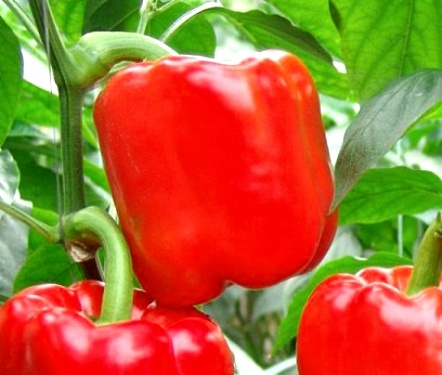
The orange miracle F1 is a hybrid resistant to viral diseases, which attracts with its appearance and pleases with excellent yield.
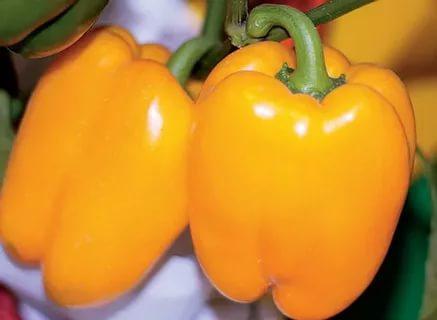
Ozharovsky - medium-early pepper of Polish selection. It is able to tie fruits in low light and temperature.
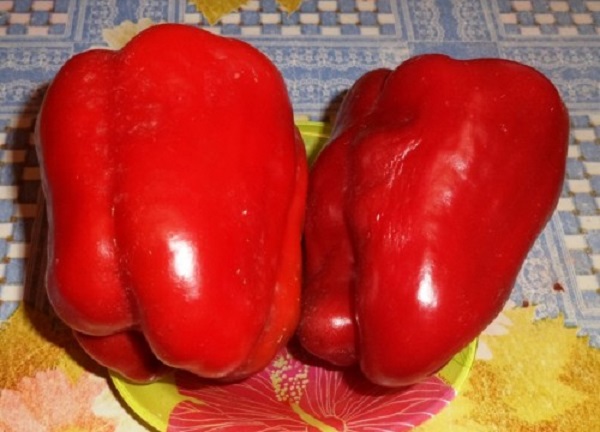
Thanks to the compactness of the bushes, the Novogogoshara variety is convenient to grow, and thanks to the round-flattened shape of the peppers, it is ideal for preserving them as a whole.

Mercedes bears fruit abundantly. About 15-20 weighty peppercorns of universal culinary use are formed on a standard plant.
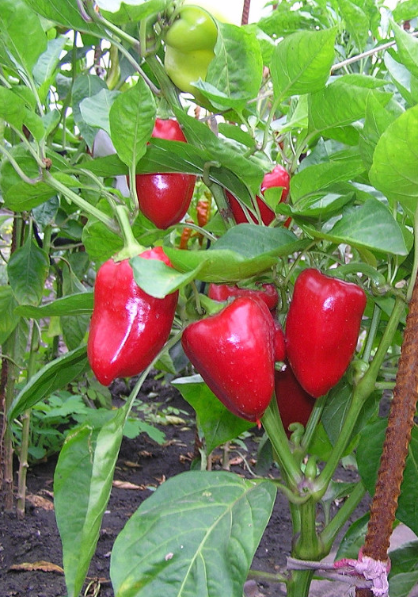
The red giant F1 is one of the most enduring peppers. A powerful bush can withstand temperature tests and drought without any problems.
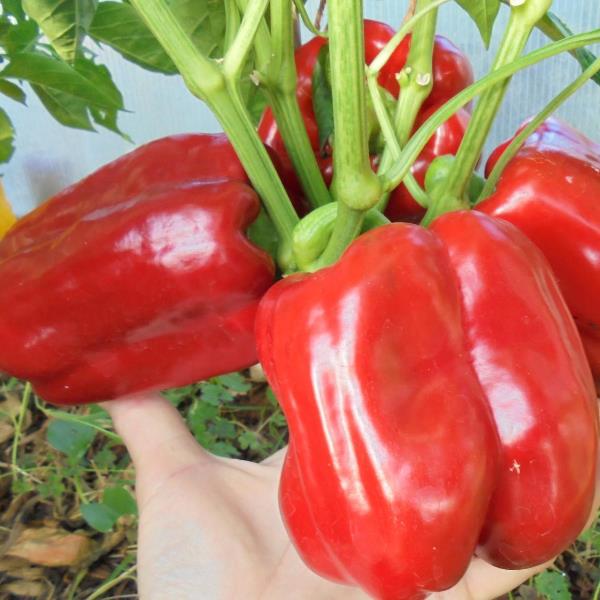
The rounded fruits of the Gingerbread Man are simply intended for pickling whole. Plants are very compact.
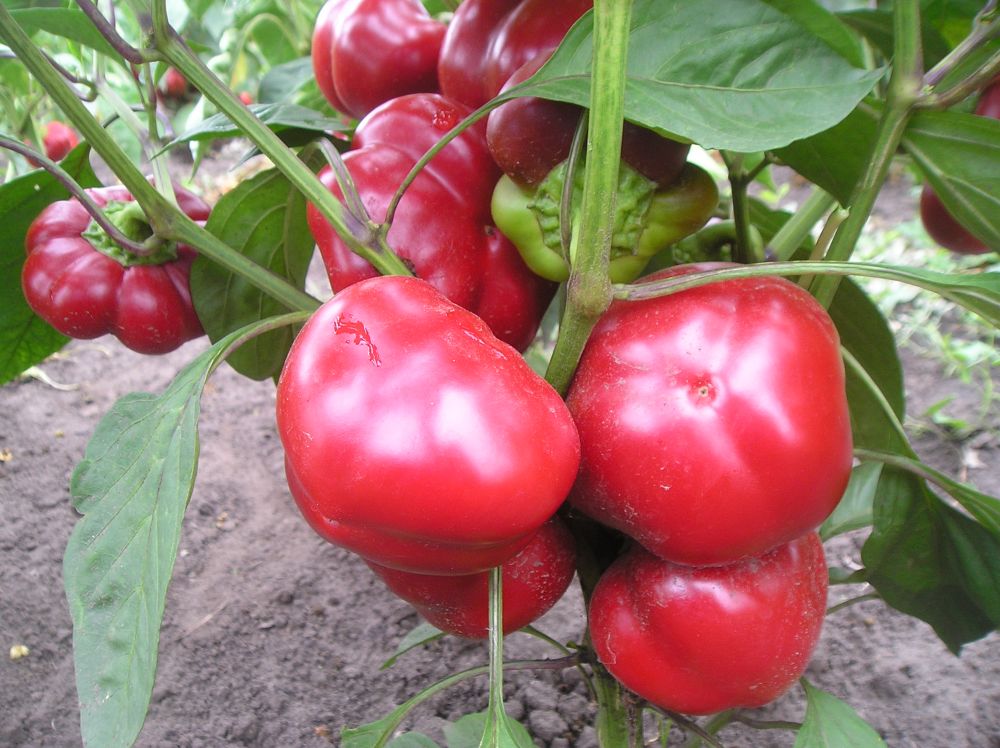
Small bushes of the Golden Jubilee are practically not afraid of spring frosts. The walls of the fruit are very fleshy.
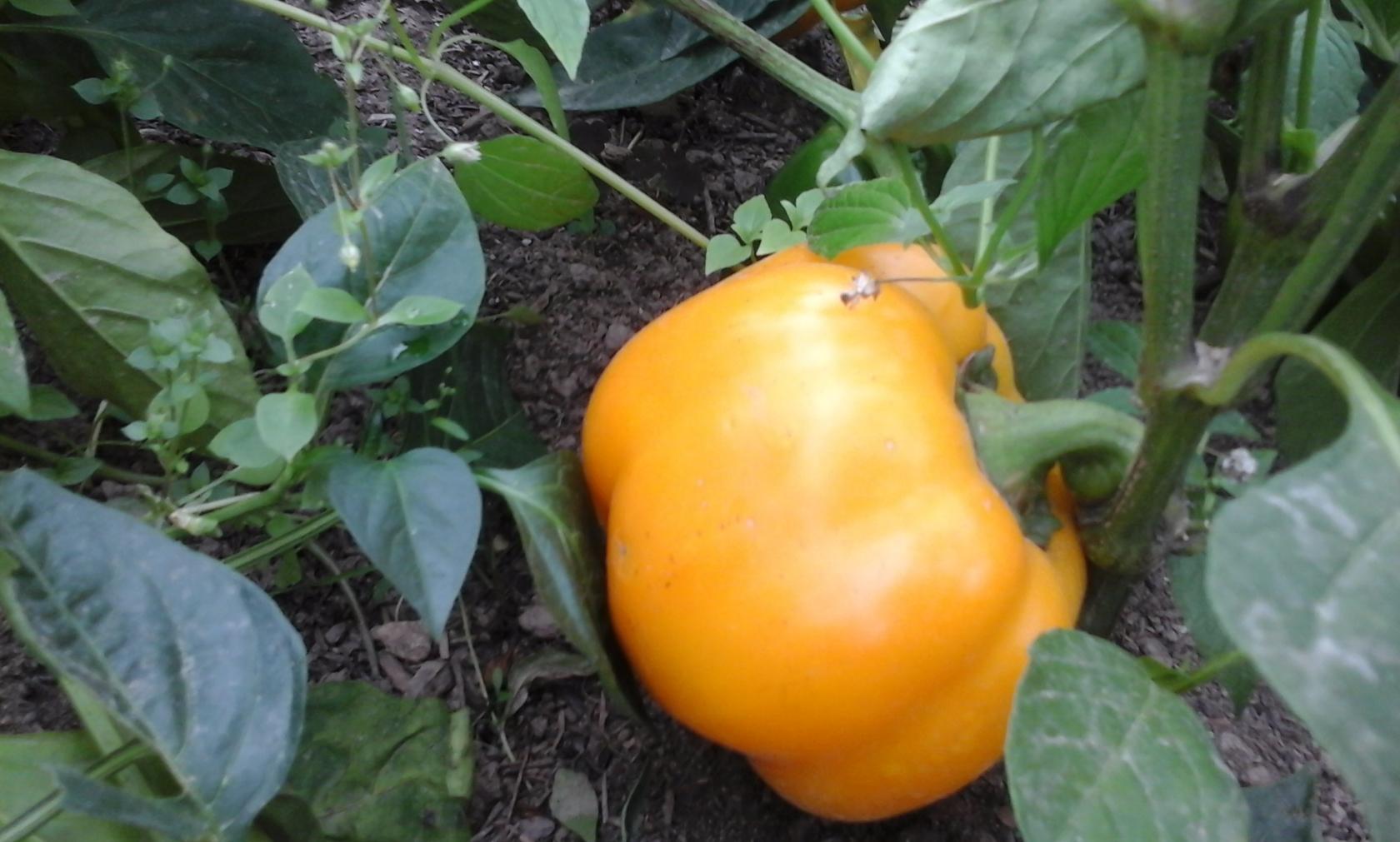
A single F1 gives a stable crop even under not very comfortable weather conditions.It features an exquisite pepper flavor.
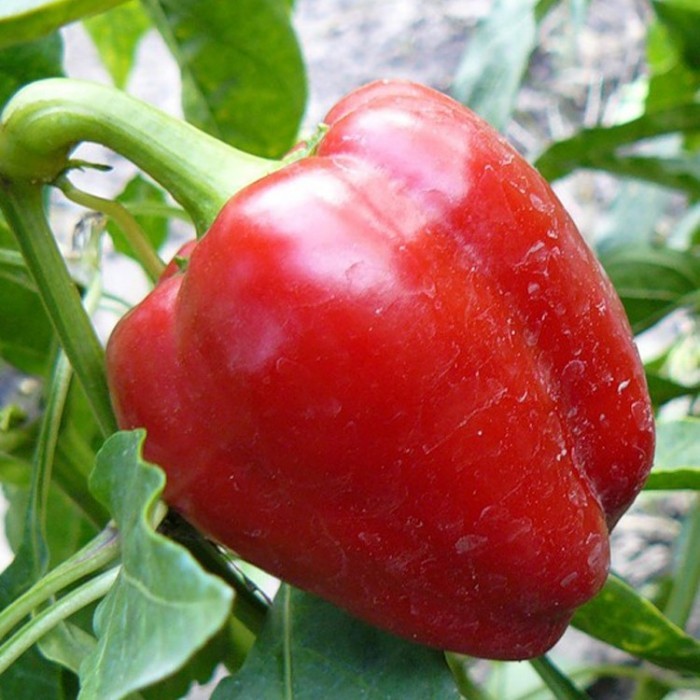
The cowhide is a universal food grade variety proven over the years. It is resistant to many diseases, especially verticillosis and phytoplasmosis.
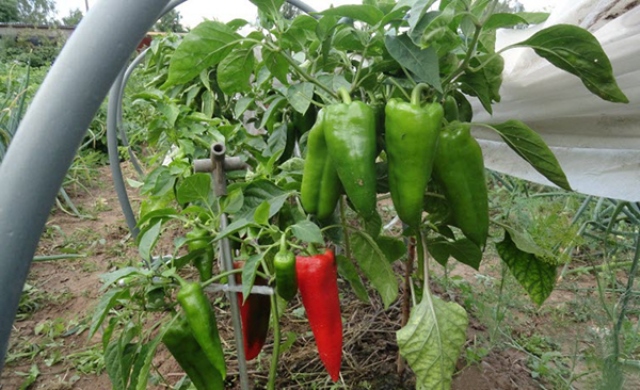
The undersized Big Daddy variety with unique purple fruits perfectly adapts to local climatic conditions.
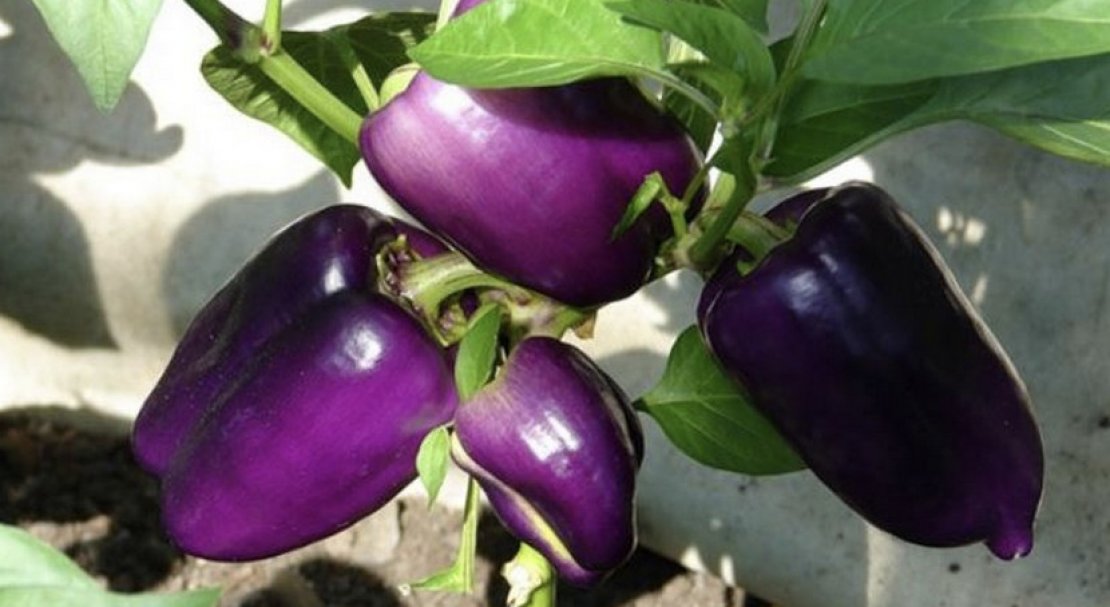
The advantages of the Big Mom variety are excellent nutritional qualities, mouth-watering orange color and early ripening.
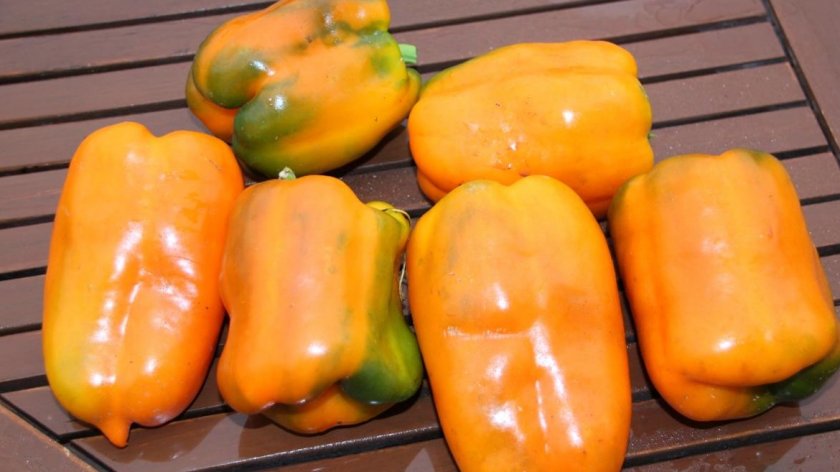
Belozerka is a popular mid-early pepper, which, in addition to many advantages, perfectly bears fruit and is stored.
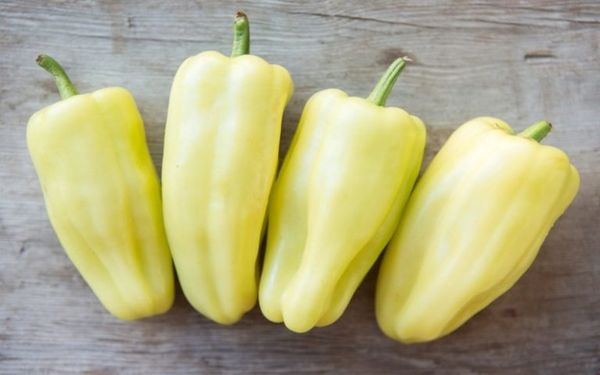
Anastasia's cherry-colored fruits have a unique fruity taste and a very aromatic smell of pulp.
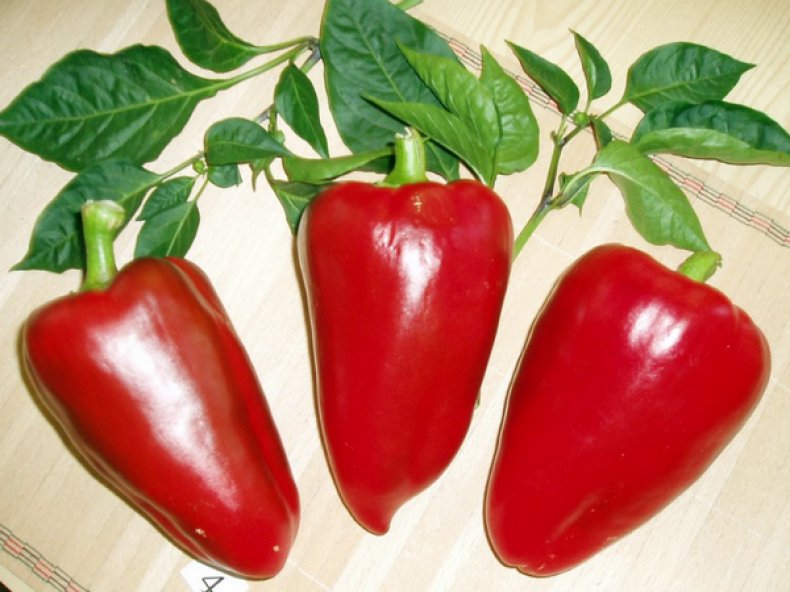
Asti is a very sweet, beautiful and high-yielding variety.
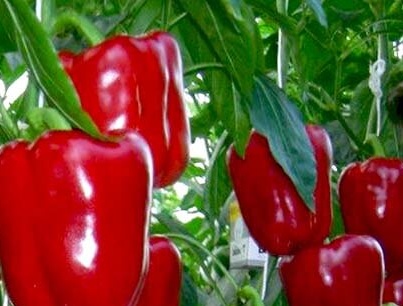
The best varieties for the greenhouse
There are a large number of large thick-walled varieties that need to be grown in a greenhouse. They are characterized by low cold resistance and are very sensitive to any temperature changes and sunlight.
| Grade | Wall thickness (mm) | Plant height (cm) | Fetal shape | The mass of the fetus (g) | Color in technical and biological ripeness |
Productivity (kg / m2) The number of days from seedling to tech. |
|---|---|---|---|---|---|---|
| Apricot favorite | 7 | 40-50 | conical | 100-120 | light green, bright orange |
10-20 100-120 |
| Agapovsky | 5-7 | 60-80 | prismatic | 114-120 | dark green bright red |
10-13 99-120 |
| Beladonna F1 | 5-7 | 60-80 | cuboid | 140-160 | greenish white, light yellow |
10-15 80-90 |
| Hero | 5-7 | 50-70 | conical | 150-180 | light green, deep red |
10-20 125-135 |
| Orient Star Chocolate F1 | 10 | up to 70 | cylindrical | 260-350 | dark green, dark brown |
8-10 95-105 |
| Isabella F1 | to 10 | up to 60 | prismatic | 130-160 | green dark red |
10-13 120-125 |
| Indalo F1 | to 10 | 150-200 | cuboid | 200-300 | green bright yellow |
7-14 110-120 |
| California Miracle | 6-8 | 70 | cuboid with a ribbed surface | 80-130 | green, scarlet |
10 100-129 |
| Cardinal F1 | 8 | up to 100 | cuboid | 250-280 | green dark purple |
8-14 80-90 |
| Swallow | 6-7 | 48-60 | oval cone-shaped | 80-100 | light green, deep red |
3,7-6 116-121 |
Swallow appreciated for its high ductility. The variety easily adapts to the variability of the weather. Thick peel allows the crop to withstand frost, transport well and be stored for a long time.
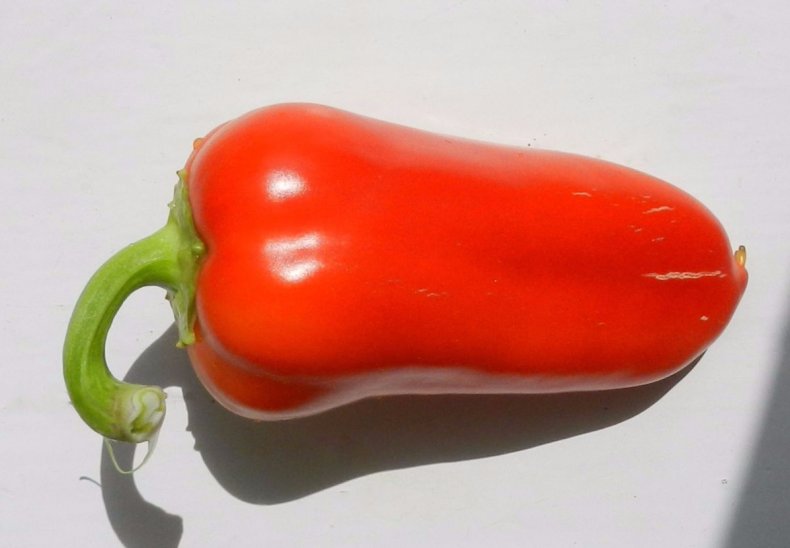
Cardinal F1 attracts attention with its appearance - aligned, large purple fruits.
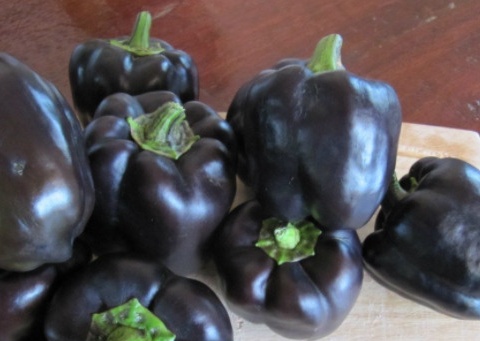
California Miracle - A mid-early variety, bred almost a century ago by American breeders. It has very beautiful, sweet, crunchy, scarlet fruits. The variety is hardy, resistant to verticillus wilting.
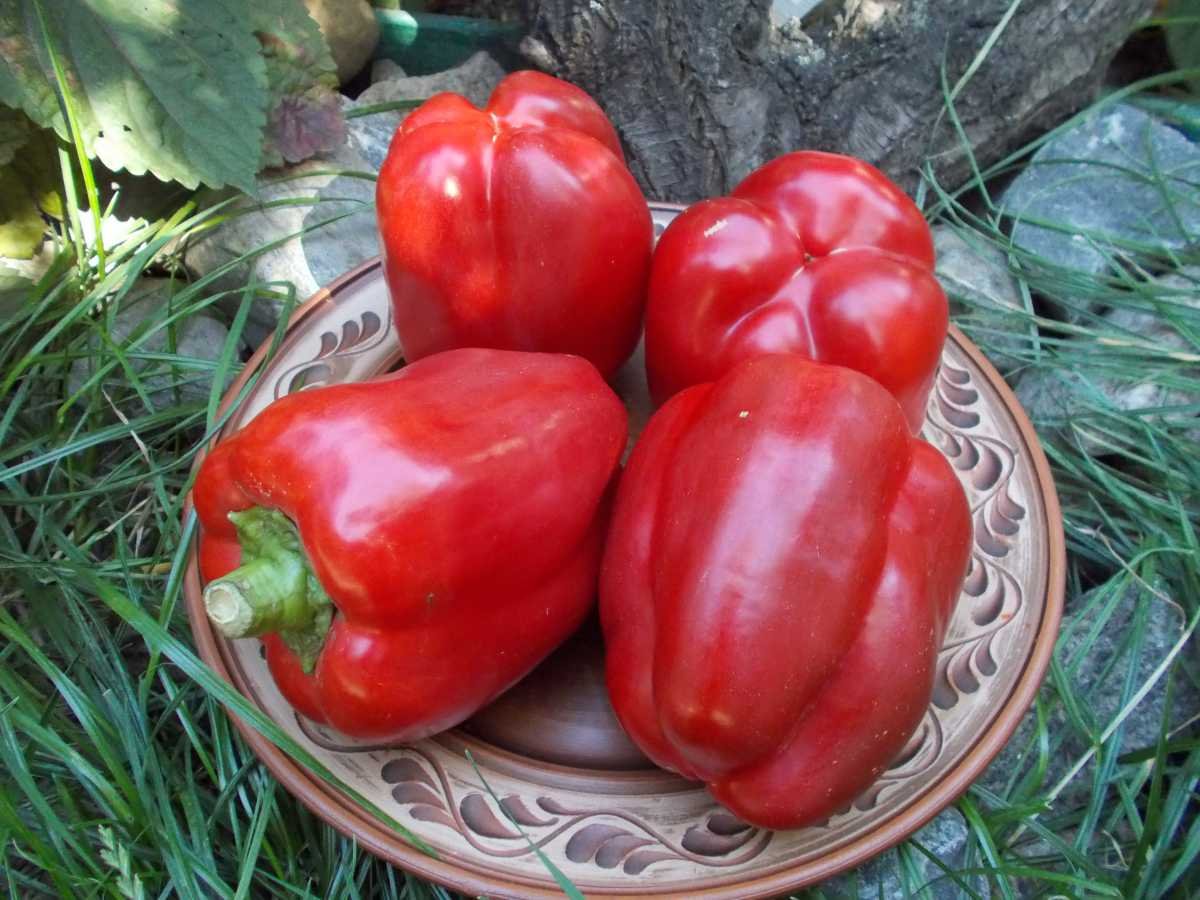
Indalo F1 is a mid-season Dutch hybrid. It is represented by very tall plants, which are desirable to form in 2 stems. Resistant to tobacco mosaic virus.
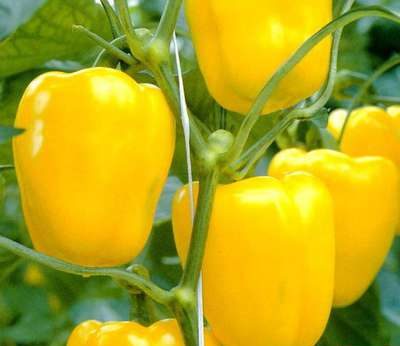
Isabella F1 is an unpretentious domestic hybrid, one of the advantages of which is a good fruit set (up to 20 pcs. Per 1 plant). It needs to be tied up and stepsoned. The fruits are excellent and do not lose their presentation in transit.
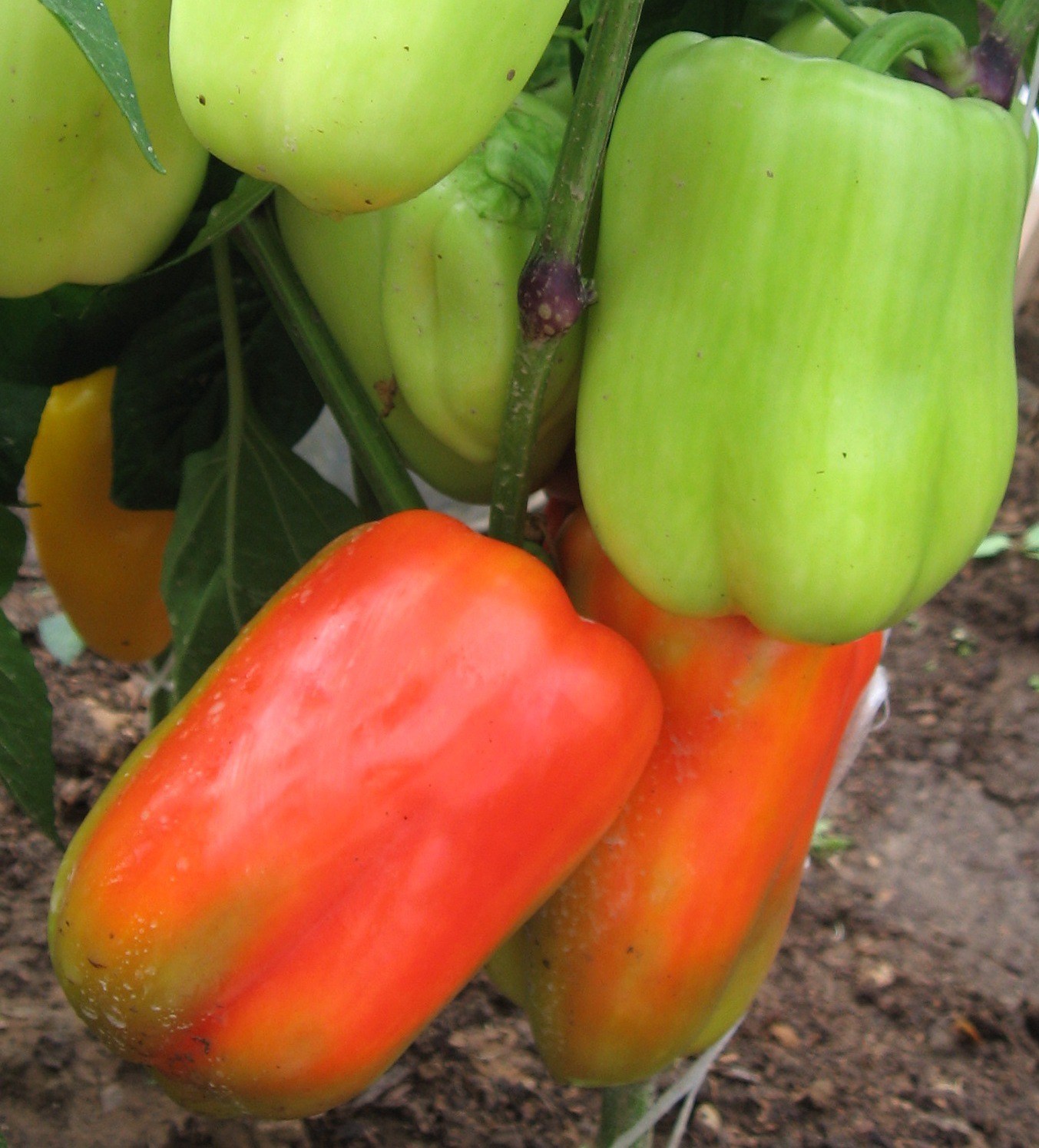
Oriental Star Chocolate F1 - a high-yielding mid-season and mid-height hybrid, which diversifies fresh dishes and preservation with its original dark brown color. It has comprehensive disease resistance.
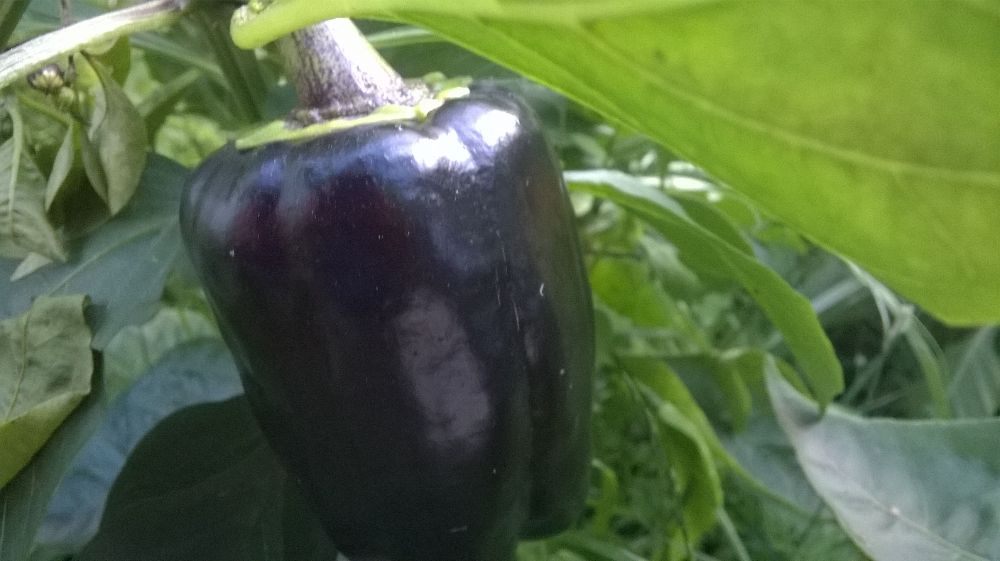
Mid-season grade Bogatyr was bred by the Moldavian Research Institute. For 2 decades, this pepper has not lost popularity in home and industrial vegetable growing due to its resistance to various diseases, cold resistance, yield and original taste.
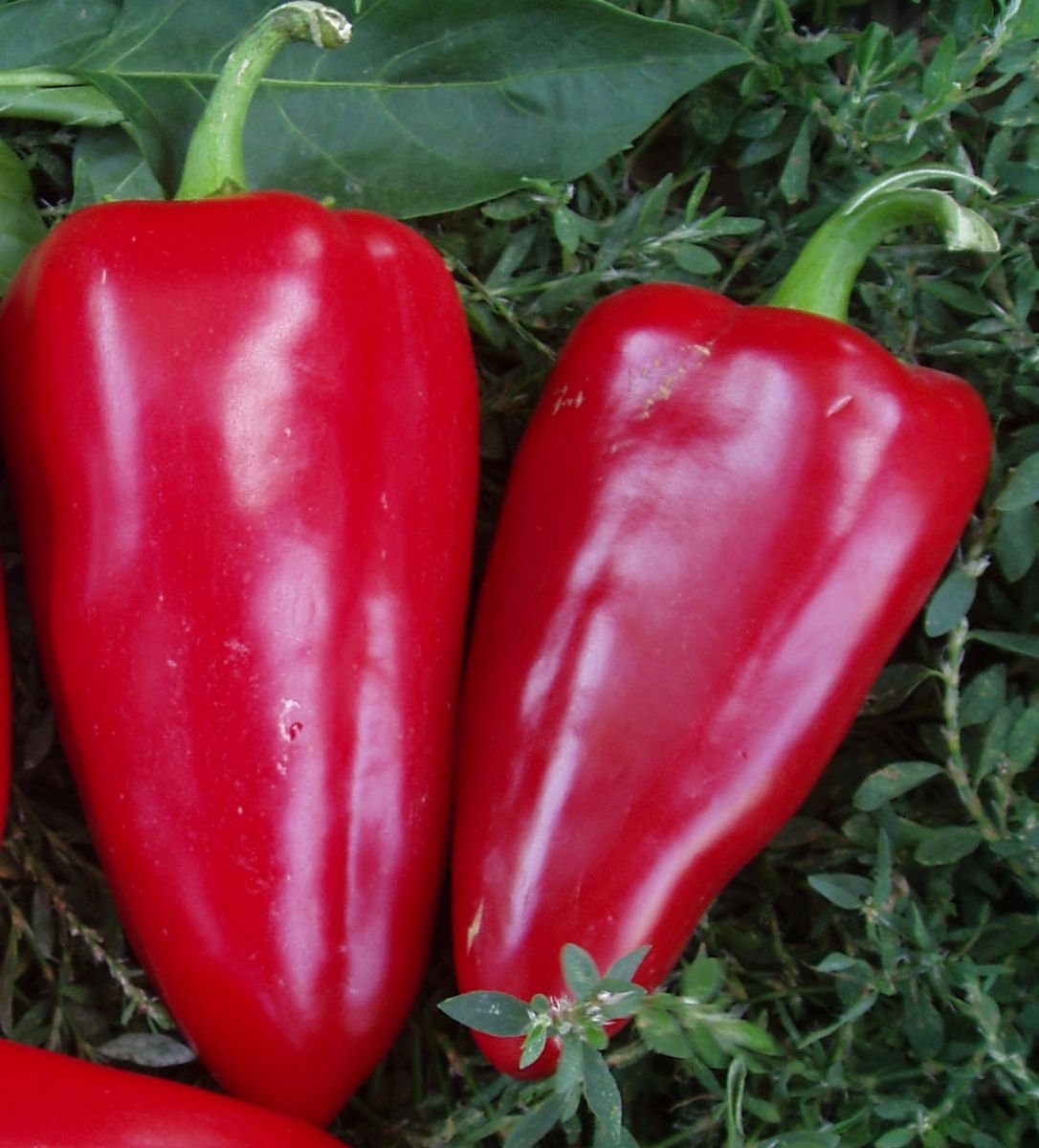
Beladonna F1 is an early ripe Dutch hybrid that combines high yield and excellent fruit quality.
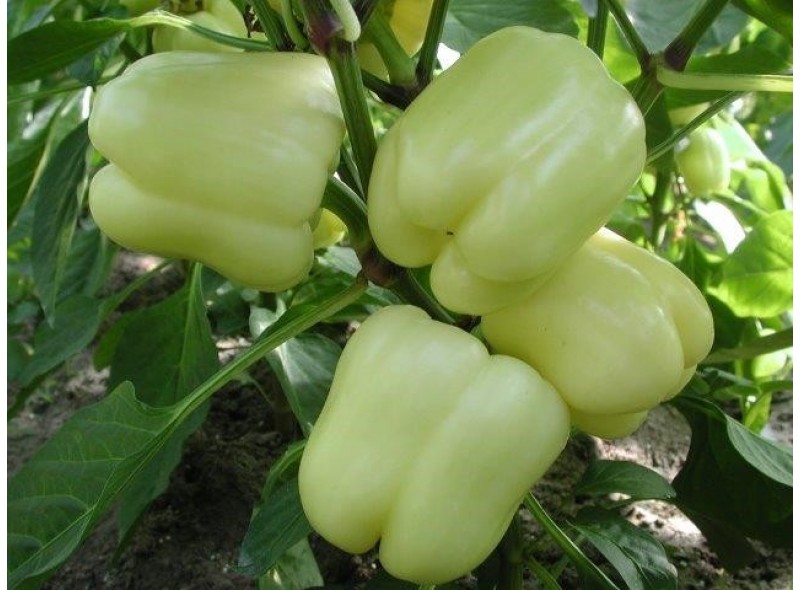
Variety Agapovsky Bred by the All-Russian Research Institute of Selection and Seed Production of Vegetable Crops at the Turn of the 80-90s. XX century Seedlings tolerate the alternation of daytime heat and night coolness. Unpretentiousness distinguishes this variety from others. The fruits have high commercial qualities.
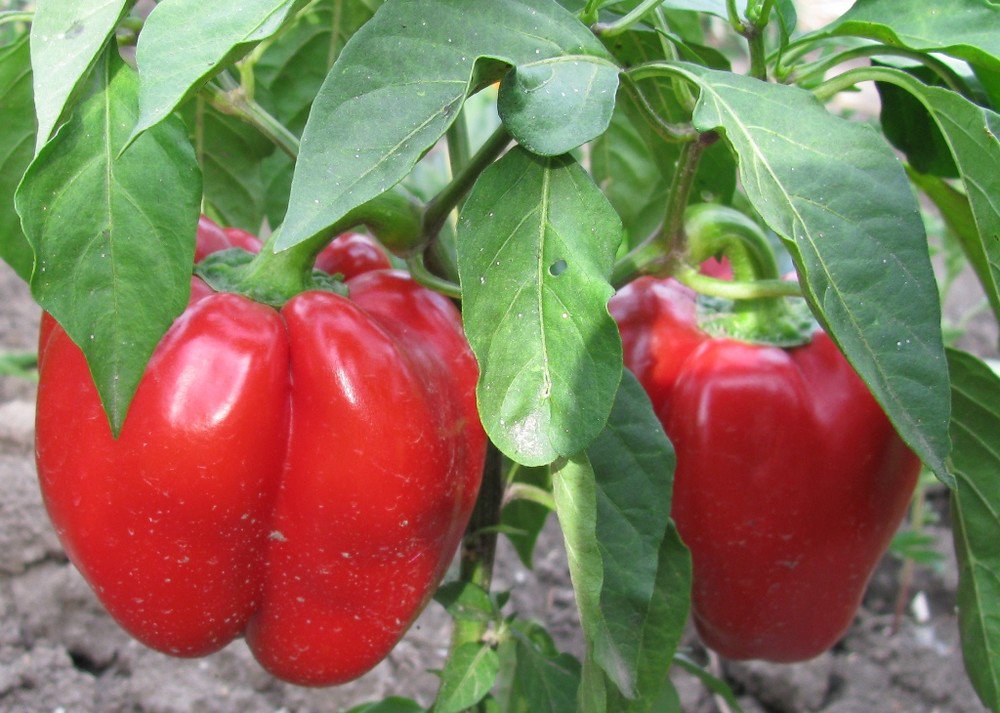
The fruits of the Apricot Favorite variety are quickly sung.They are very fragrant and tasty, have a universal purpose. The plant is resistant to many diseases.
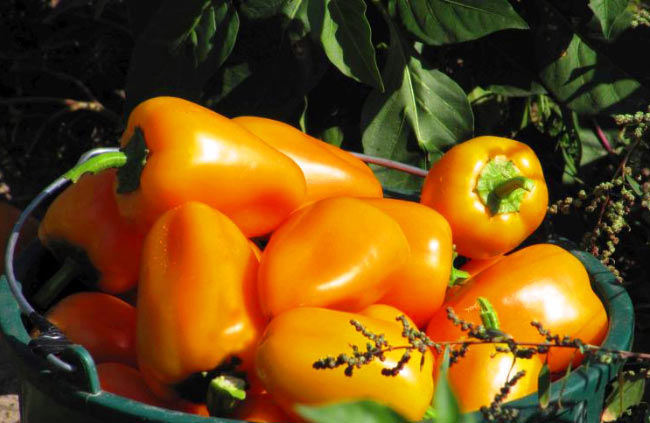
How to grow thick-walled varieties
For sowing seeds of pepper of thick-walled varieties, you need to prepare a light and loose substrate, consisting of 2 parts of humus, 2 parts of peat and 1 part of washed river sand. This mixture is recommended to be steamed in the oven to get rid of fungal diseases and weeds. You can take a universal store mix for vegetables by adding sand (0.5 parts sand to 3 parts mixture).
The selected seeds should be treated with fungicide (Fitosporin-M, Vitaros or Maxim) or dispensed with their 20-minute soaking in a pink solution of potassium permanganate. After the potassium permanganate solution, rinse, put in a flat container between a pair of layers of moist tissue and place in a warm place with a temperature of at least + 25 ° С. After 1-2 weeks, the seeds begin to hatch.

When sowing, the distance between the seeds should be kept at 1.5-2 cm. Coating with a layer of substrate is allowed no more than 1-1.5 cm, which needs to be slightly compacted.
Watering should be neat. Excessive moisture evaporation will prevent the creation of a mini-greenhouse. The optimum temperature is + 25 ° C. With the advent of seedlings, seedlings need to provide daytime temperature + 26-28 ° С and night temperature + 15-17 ° С. They need a bright place (in February-March they will also need additional lighting) and moderate watering.
After 3-4 weeks, when 1-2 true leaves appear, seedlings can be dived into pots with a capacity of 100-150 ml. Seedlings should be protected from direct sunlight and not allow cooling of the soil (at least + 13 ° C).
Common Growing Questions
Thick-walled sweet pepper varieties need special care, but they are more productive in comparison with the varieties possessing thin pericarp. It is the walls of the fruit of the pepper that are eaten. The thicker they are, the more profitable is growing a vegetable. The listed varieties of pepper with a thick pericarp make it possible for land owners to renew and diversify the assortment on the beds, increasing their return by obtaining a high crop of beautiful, juicy and tasty peppers.




 Calorie pepper stuffed with meat and rice - BZHU per 100 grams
Calorie pepper stuffed with meat and rice - BZHU per 100 grams Gorky pepper - the best varieties for open ground
Gorky pepper - the best varieties for open ground Hot pepper seeds - the best varieties for open ground and reviews
Hot pepper seeds - the best varieties for open ground and reviews Capsicum tincture for hair - how to use and reviews
Capsicum tincture for hair - how to use and reviews